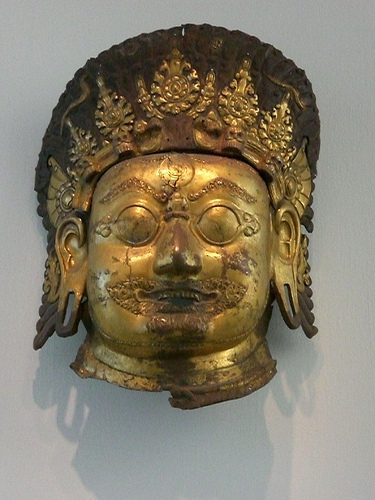![]()
Today in 1768, the Kingdom Nepal was declared, and on the same day in 1923 gained their Independence.
Nepal

Nepal Breweries
- Chaudhary Group
- Coblenzer Beers (Sthapit & Schlau)
- Gorkha Brewery
- Himalayan Brewery
- Mount Everest Brewery
- Nepali Beer
- United Breweries Nepal
Nepal Brewery Guides
Other Guides
- CIA World Factbook
- Official Website
- U.S. Embassy
- Wikipedia
Guild: None Known
National Regulatory Agency: None
Beverage Alcohol Labeling Requirements: Not Known
Drunk Driving Laws: BAC 0.00% NOte: Breathalyzer testing is regularly used in major cities like Kathmandu, Pokhara, Biratnagar and Highways. For more verification, driver will be taken to nearest hospitals for blood and urine test (if demanded by the driver). Licence will be seized instantly. Driver will get the licence back after attending anti-alcoholic classes run by Nepal Traffic Police and fine will be charged NRS 1000.

- Full Name: Federal Democratic Republic of Nepal
- Location: Southern Asia, between China and India
- Government Type: Federal Democratic Republic
- Language: Nepali (official) 47.8%, Maithali 12.1%, Bhojpuri 7.4%, Tharu (Dagaura/Rana) 5.8%, Tamang 5.1%, Newar 3.6%, Magar 3.3%, Awadhi 2.4%, other 10%, unspecified 2.5%
- Religion(s): Hindu 80.6%, Buddhist 10.7%, Muslim 4.2%, Kirant 3.6%, other 0.9%
- Capital: Kathmandu
- Population: 29,890,686; 41st
- Area: 147,181 sq km, 94th
- Comparative Area: Slightly larger than Arkansas
- National Food: Dal bhat
- National Symbols: Cow; Rhododendron Blossom
- Affiliations: UN
- Independence: Kingdom declared, December 21, 1768 (unified by Prithvi Narayan SHAH) / Republic declared, May 28, 2008

- Alcohol Legal: Yes
- Minimum Drinking Age: 18 (to drink); None (to buy)
- BAC: 0.00%
- Number of Breweries: 5

- How to Say “Beer”: biyar, jad / बियर
- How to Order a Beer: N/A
- How to Say “Cheers”: N/A
- Toasting Etiquette: N/A

Alcohol Consumption By Type:
- Beer: 35%
- Wine: <1%
- Spirits: 65%
Alcohol Consumption Per Capita (in litres):
- Recorded: 7.20
- Unrecorded: 2.20
- Total: 9.40
- Beer: 1.15
WHO Alcohol Data:
- Per Capita Consumption: 0.2 litres
- Alcohol Consumption Trend: Increase
- Excise Taxes: Yes
- Minimum Age: 25
- Sales Restrictions: No
- Advertising Restrictions: Yes
- Sponsorship/Promotional Restrictions: Yes
Patterns of Drinking Score: N/A
Prohibition: None






